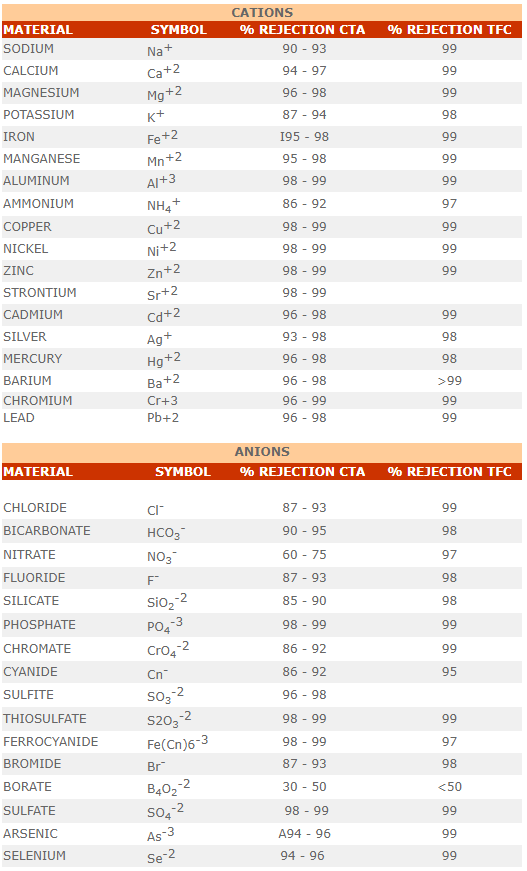Ionic Solutions
Typical ionic rejection for reverse osmosis membranes @ 225 psi.

Organic compounds such as Benzene, EDB, Trichloroethane, TCE, DBCP, THMs, Dichloroethylene, etc. are removed, but the % rejection is much lower, 50-80% typically for TFCs. Most organic compounds with molecular weights greater than 200 are highly rejected by both types of membrane. Materials, including some of the above compounds, that attack the membrane material will eventually destroy any rejecting ability of the active layer. The membrane will behave much more like a microfilter than reverse osmosis membrane. In the most severe cases with CTA membranes, the membrane can disappear entirely. Consult water treatment professionals in areas with known serious pollution problems.
Gases that are dissolved in the feed water will generally not be rejected to any significant extent. If the feed water has an odor problem, it is best to treat the problem separate from the R.O. system. Consult with a water treatment professional for specific solutions to unusual feed water situations.
Rejection characteristics of membranes are influenced by the particular mix of solutes in the water. The rejection will decrease at lower pressures, so use the numbers shown as a guideline only.